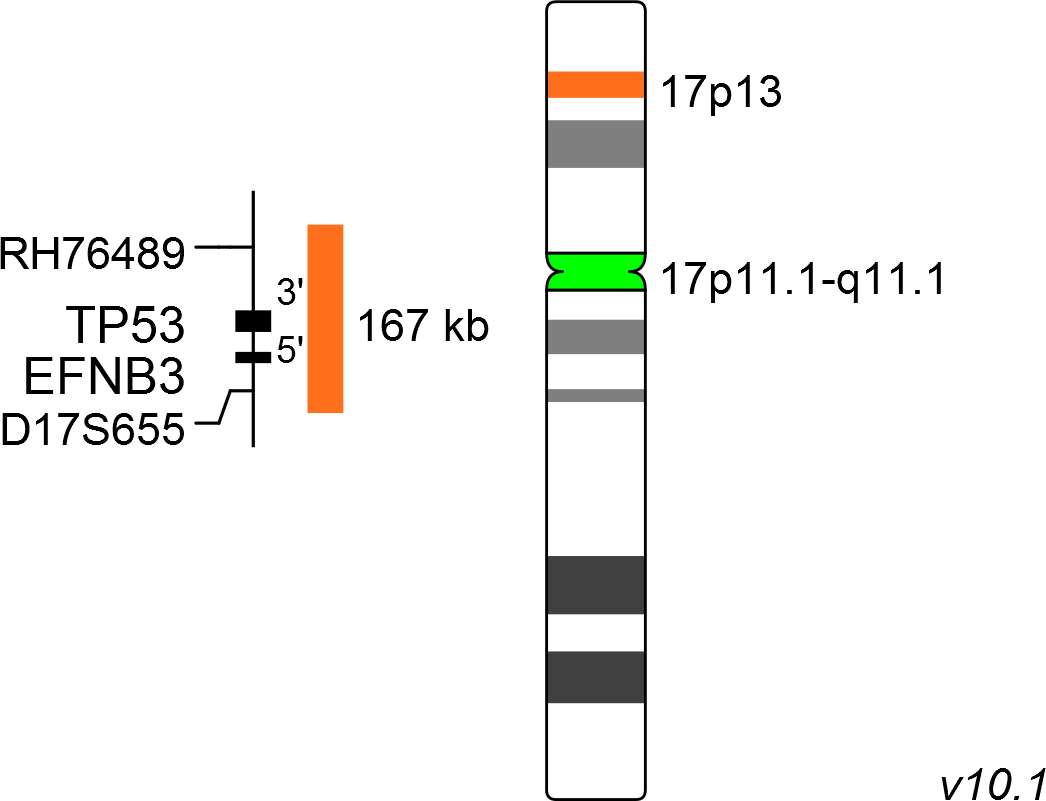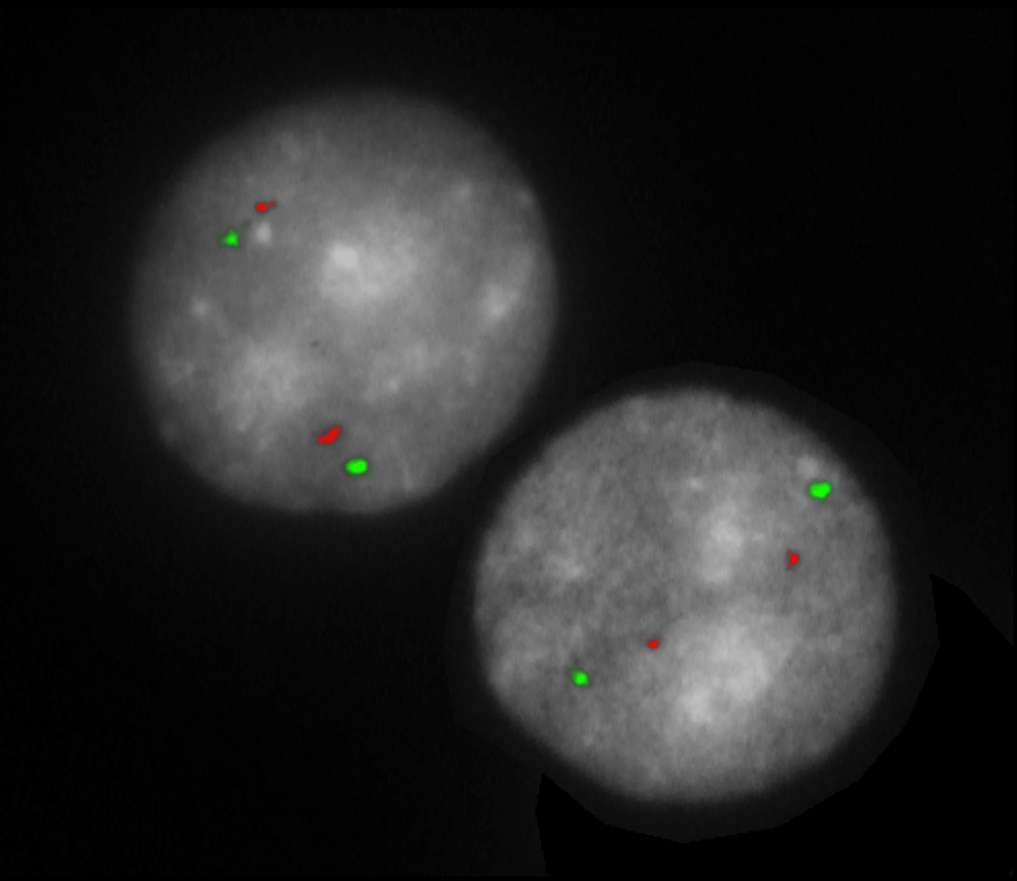
XL TP53/17cen
Deletion Probe
- Order Number
- D-5103-100-OG
- Package Size
- 100 µl (10 Tests)
- Chromosome
- 1717
- Regulatory Status
- IVDD
IVDR Certification
This probe is IVDR-certified in compliance with the Regulation (EU) 2017/746 on in vitro diagnostic medical devices (IVDR).
MetaSystems Probes has already certified a wide range of FISH probes, according to IVDR.
This product remains IVDD-certified until further notice.

XL TP53/17cen consists of an orange-labeled probe hybridizing to the TP53 gene region at 17p13 and a green-labeled probe hybridizing to the centromere of chromosome 17.
Probe maps for selected products have been updated. These updates ensure a consistent presentation of all gaps larger than 10 kb including adjustments to markers, genes, and related elements. This update does not affect the device characteristics or product composition. Please refer to the list to find out which products now include updated probe maps.
Probe map details are based on UCSC Genome Browser GRCh37/hg19, with map components not to scale.
TP53 is a central tumor suppressor gene involved in DNA repair, differentiation, cell cycle arrest and apoptosis. It is regarded as the “guardian of the genome” because of its role in conserving genome stability. TP53 alteration due to mutation or deletion plays a crucial role in tumorigenesis and is generally associated with advanced stages of disease, insufficient response to therapy and poor prognosis.
TP53 is also the most frequently mutated gene in human cancer with a mutation frequency of up to 90% in solid tumors and an average of 10% alterations in hematologic malignancies. TP53 deletions are often associated with mutations of the second allele, supporting the “two-hit” hypothesis of cancer development. If both mutation and deletion of TP53 are present, there is a significant negative impact on overall survival in hematological malignancies. In multiple myeloma, 33.8% of newly diagnosed patients carry a TP53 deletion, with even higher frequencies at relapse (54.5%). In acute myeloid leukemia (AML), 13% of patients show TP53 alterations, including 5% with mutations and deletions and 1% with deletion only. Patients with myelodysplastic syndrome (MDS) show TP53 alterations in 7% of the cases, including 1% with mutations and deletions and 1% with deletion only. In AML and MDS, TP53 alterations and 17p deletion are associated with a complex karyotype, poor response to therapy, and reduced survival. In MDS, even TP53 deletion without mutation of the second allele has a significant negative impact on overall survival.
Deletions in TP53 frequently result from larger deletions of the short arm of chromosome 17. Interphase FISH for TP53 at 17p13 can be used to determine deletions of TP53 even in cells with a low proliferative capacity.
Clinical Applications
- Multiple Myeloma and Plasma Cell Neoplasms (MM)
- Acute Myelogenous Leukemia (AML)
- Myelodysplastic Syndrome (MDS)
- Chronic Lymphocytic Leukemia (CLL)
- Chronic Myelogenous Leukemia (CML)

Normal Cell:
Two green (2G) and two orange (2O) signals.

Aberrant Cell (typical results):
Two green (2G) and one orange (1O) signal resulting from loss of one orange signal.
- Drach et al (1998) Blood 92:802-809
- Soenen et al (1998) Blood 91:1008-1015
- Stengel et al (2017) Leukemia 31:705–711
Certificate of Analysis (CoA)
or go to CoA Database




